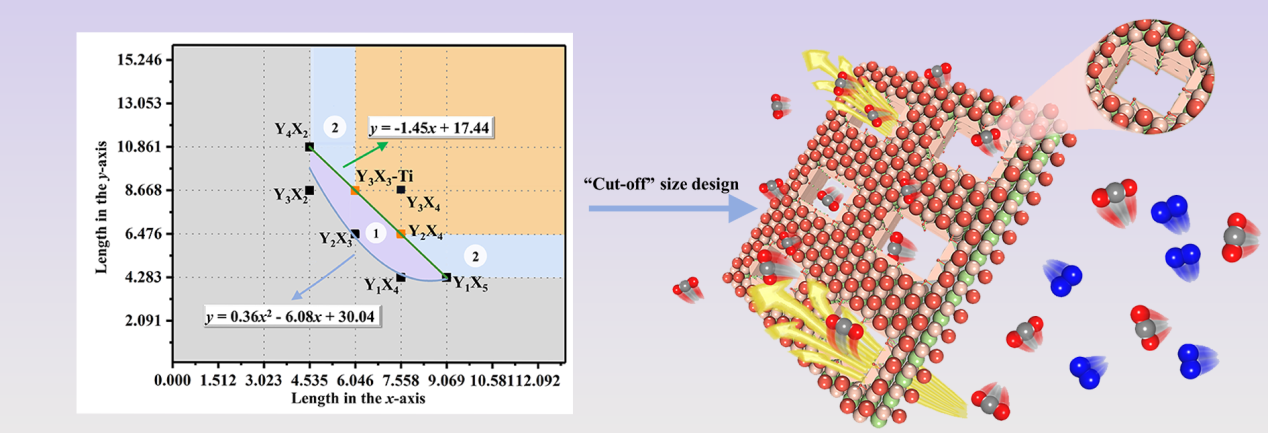
近日,课题组博士生殷齐康论文“Nanoporous Ti3C2O2 monolayer towards high permeance and selectivity for CO2/N2 separation: CO2-MXene interaction tuning”被Chemical Engineering Journal(2023年中科院SCI期刊一区TOP期刊,IF=15.1)接收!
Abstract
MXene, as a new gas separation membrane, has good stability and suitable pore topological structures to mitigate the greenhouse effect caused by excessive CO2 emission. However, the large quadrupole and polarizability of CO2 make it a strong interaction with MXene, thus leading to a strong solubility and weak diffusivity of CO2. Here, we design nanoporous Ti3C2O2 monolayers (YmXn) with exposed C atoms that could tune CO2-Ti3C2O2 interaction so as to improve gas separation performance by density functional theory and molecular dynamics simulation. The scope of “Cut-off” size is obtained by analyzing the gas separation state from un-permeation to permeation. Results reveal that nanoporous Ti3C2O2 membranes achieve both outstanding CO2 selectivity and permeance. The best-performance Y3X3-Ti possesses CO2 permeance of 1.01 × 10-4 and 2.56 × 10-5 mol s-1 m-2 Pa-1 for equimolar gas mixtures and flue gases, respectively, and both the CO2/N2 selectivity reach 100%. The gas separation mechanism is dominated by diffusion selectivity rather than solution selectivity in nanoporous Ti3C2O2. The dynamic processes of gas permeation, including the center of mass, mean square displacement, and radial distribution function of the gases, are precisely investigated. The electrostatic repulsion between the C atoms in the channel of the membrane and CO2 follows the sequence Y3X3-C > Y2X4 > Y3X3-Ti, which is the key to regulating gas diffusion. Results of this work highlight that tuning gas-membrane interaction and designing “Cut-off” size are effective strategies to achieve excellent CO2 separation performance, and shed new light on the intrinsic mechanism in high-performance gas separation membranes.
https://www.sciencedirect.com/science/article/pii/S1385894724026457?via%3Dihub